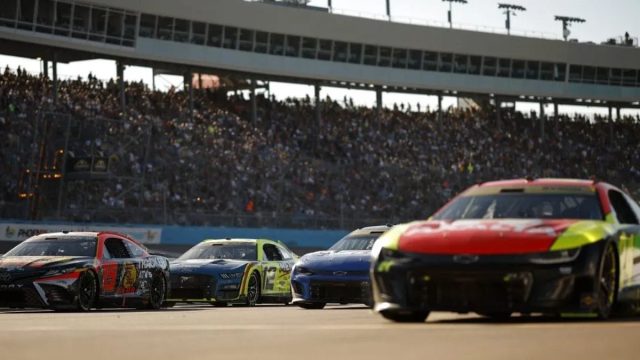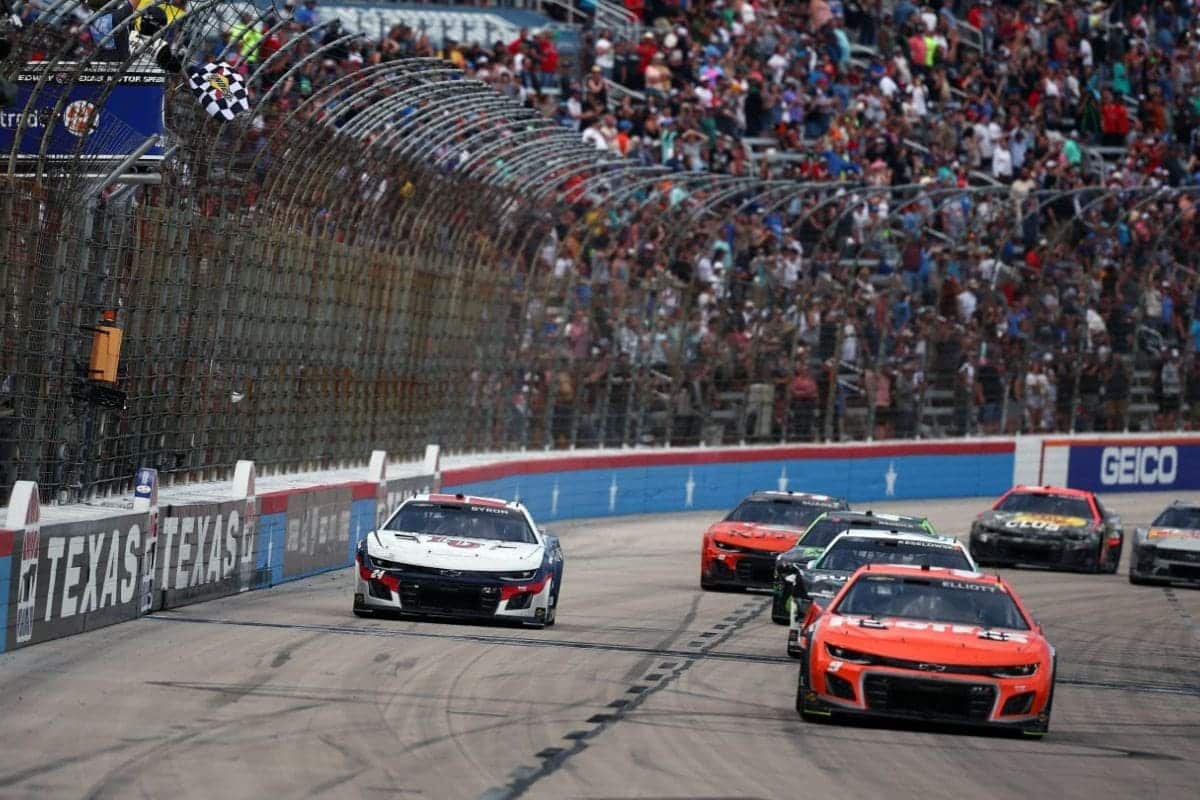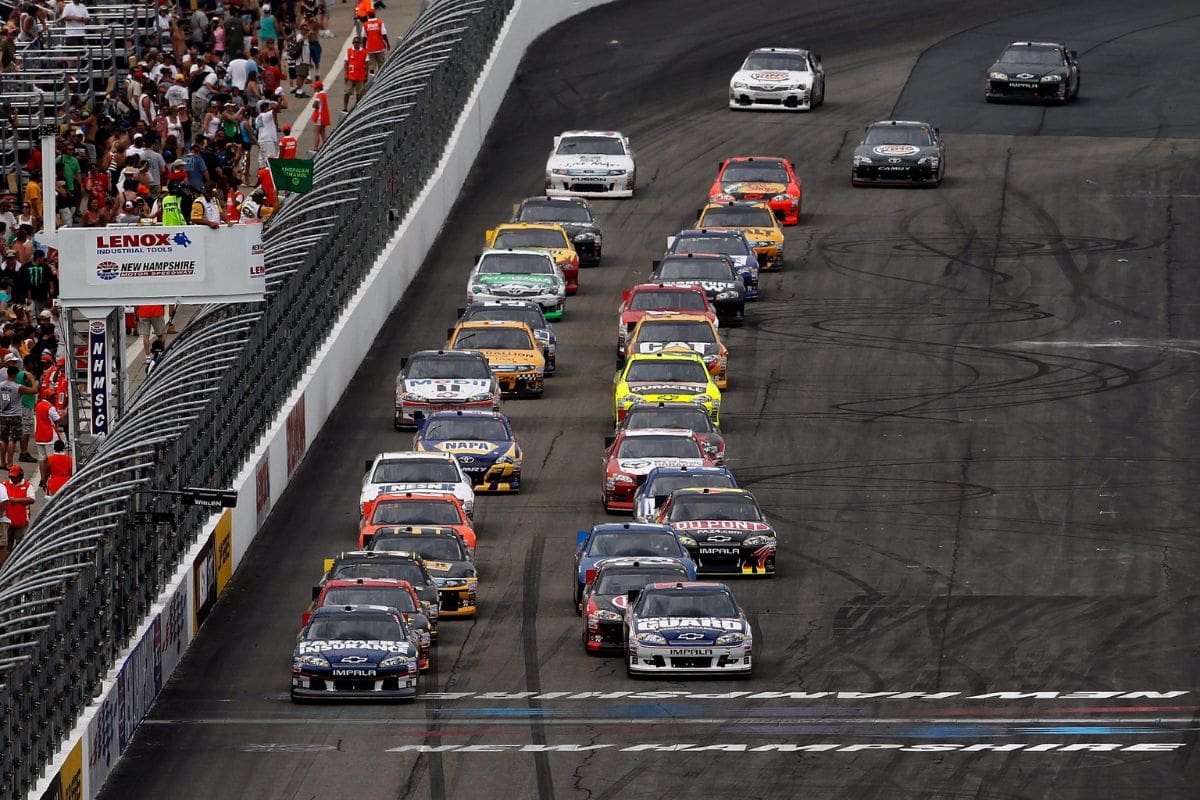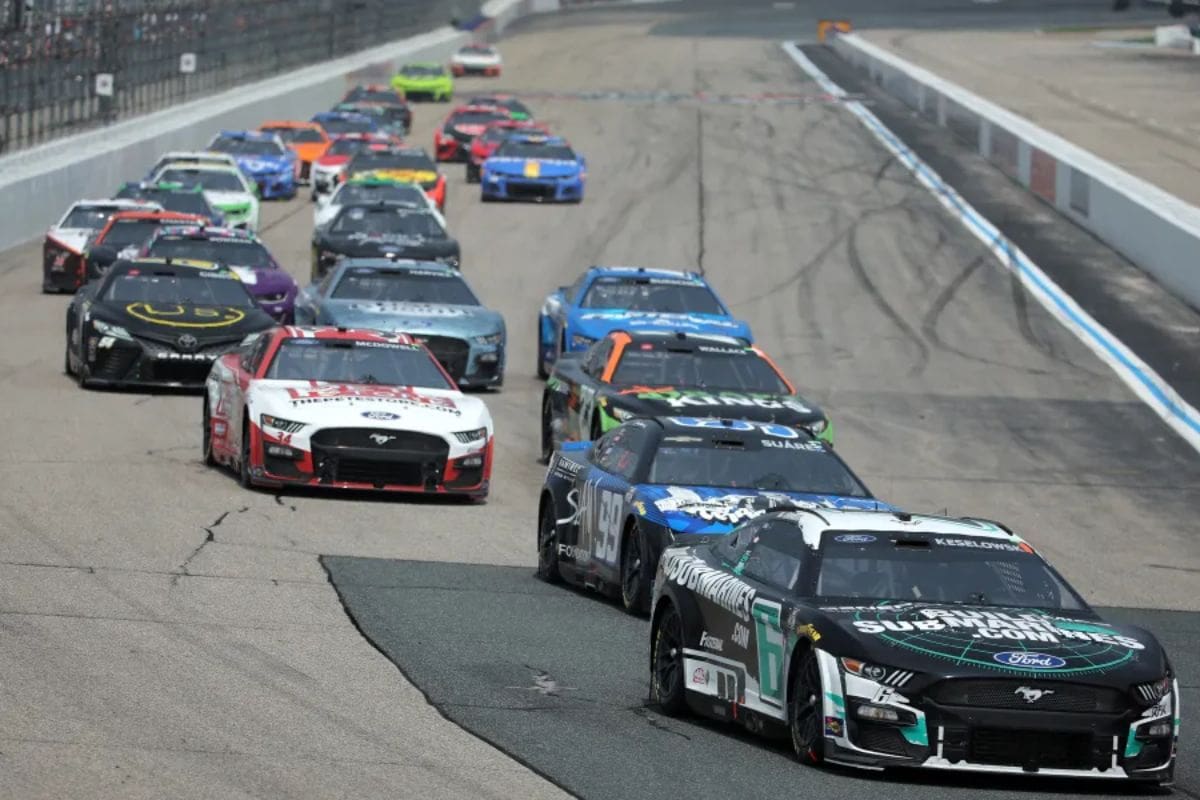Fans Call For Cup Teams to Face Strict Measures: In the wake of the recent drama at Chicago’s Grant Park 165, fans have voiced strong demands for Cup teams to adhere to strict measures, particularly concerning tire strategies under variable weather conditions. The controversy centers on teams’ decisions to use slick tires despite wet conditions, raising alarms about the resultant risks and safety implications for drivers. This scrutiny highlights a critical tension between the pursuit of competitive advantage and the imperative of ensuring driver safety. As calls for accountability grow louder, the question remains: how will NASCAR respond to these escalating concerns while maintaining the integrity of the sport?
Key Highlights
- Fans are concerned about the safety of using slick tires in wet conditions, leading to calls for stricter measures.
- The chaos caused by unpredictable weather and tire strategies has fans demanding more uniform safety regulations for Cup teams.
- NASCAR’s delegation of tire decisions to teams has intensified fan worries about potential accidents and inconsistent safety practices.
- Fans emphasize the need for mandated tire switches to ensure uniformity and reduce the risk of hazardous conditions during the race.
- The potential for early chaos and increased accidents on a damp track has led to fan calls for stricter oversight and penalties for unsafe tire choices.
Race Delay and Tire Strategy Dilemma
The unexpected rain delay at Chicago Grant Park has introduced a significant challenge for NASCAR Cup Series teams, compelling them to reassess their tire strategies under rapidly changing weather conditions. The passing showers have created a complex scenario where teams must balance the immediate need for wet-weather tires against the anticipated shift to dry conditions.
Initially, the rain-soaked track necessitated the use of wet tires designed to provide optimal traction on slick surfaces. However, with forecasts indicating a quick clearance of weather, the dilemma arises in timing the switch to dry tires. This crucial change is essential; an early shift could result in reduced grip on a still-moist track, while a delayed switch risks losing a competitive edge as the racing surface dries.
Teams must consider multiple factors, including track drying rates, tire degradation, and the overall race strategy. Data analysis and simulations will play a critical role in informing these decisions. The compounded complexity of these elements highlights the significance of real-time communication between drivers and their pit crews, along with the strategic expertise of team engineers and strategists.
Moreover, the dynamic weather conditions necessitate flexibility and adaptability. Teams must remain vigilant, continuously monitoring meteorological updates and on-track conditions. The ability to swiftly implement strategic adjustments will likely differentiate the competitive outcomes.
Teams’ Tire Strategy and Fan Reaction
Many teams chose slick tires despite the wet conditions, a decision that sparked considerable discontent among fans who foresaw heightened risks of accidents and collisions. Unlike the race at New Hampshire, where NASCAR mandated a tire switch, teams in Chicago had the freedom to select their tires. This autonomy led to a strategic conundrum: whether to prioritize grip with wet-weather tires or maintain track position with slicks.
Some teams are opting for slicks even with rain at some parts of the tracks.
— Bob Pockrass (@bobpockrass) July 7, 2024
The general sentiment among fans was one of apprehension. They predicted that the choice of slick tires would compromise safety, leading to a greater likelihood of on-track incidents. Fans voiced their concerns on different platforms, highlighting the precariousness of driving a wet track with tires ill-suited for such conditions. Their predictions were not without merit, as the decision to use slick tires indeed increased the risk factors inherent in racing under wet conditions.
| Tire Type | Fan Reaction |
|---|---|
| Slick Tires | Increased risk of accidents due to poor traction |
| Wet-Weather Tires | Safer option, yet potential loss of track position |
| Mandated Switch | Preferred by fans for uniformity and safety |
Slick tires, while advantageous for maintaining competitive track positions, notably reduce traction on wet surfaces, increasing the likelihood of skids and collisions. Conversely, wet-weather tires improve safety but can result in a loss of vital track positions early in the race. Fans generally favor a mandated switch, as seen in New Hampshire, which guarantees uniformity and minimizes risks across the board.
Driver and Team Choices
Facing unpredictable weather conditions, numerous drivers and teams opted for different tire strategies, weighing the advantages of slicks versus the dependability of wet-weather tires. Martin Truex Jr, Joey Logano, and Ryan Blaney, among others, chose slicks despite the wet track conditions. This bold move emphasized a risk on rapidly changing weather, possibly providing a significant edge in speed and handling on a drying track. However, this tactic came with inherent risks, especially given the forecast of deteriorating weather which could require a costly pit stop to switch to wet-weather tires.
“It was a crazy race from the start.” – Blaney
In contrast, Chase Elliott’s team, guided by his crew chief, opted to begin with four wet-weather Goodyear tires. This cautious strategy prioritized reliability and immediate grip over the potential advantages of slicks. The decision reflects a strategic calculation that values consistency and safety in the face of uncertain and potentially dangerous conditions. This choice could be beneficial if the weather worsens, giving Elliott a steady performance while others may need to change tires hastily.
These different approaches show the intricate decision-making processes inherent in motorsport, where crew chiefs must constantly balance risk and reward. The fluctuating weather conditions in Chicago have certainly heightened these strategic choices, making the pit crew’s role and their real-time evaluations more crucial than ever.
Fan Reaction and Concerns
Numerous fans have expressed concern over the contrasting tire strategies employed by teams, fearing that aggressive choices may lead to early chaos and increased accidents on the track. These apprehensions stem from the strategic decisions made by the teams regarding tire selection, particularly the use of slicks under potentially adverse conditions. The recollection of last year’s race, where multiple cars lost control on a wet surface and crashed into the wall, looms large in the collective memory of the fanbase.
A significant portion of the fanbase is vocal about the potential repercussions of these tire strategies. One particularly irate fan voiced their displeasure, suggesting that teams intentionally creating hazardous conditions should face severe penalties, including fines or expulsion from the sport. This sentiment highlights a broader concern for safety and the integrity of the race. Fans fear that the pursuit of aggressive racing tactics may compromise the general safety and enjoyment of the event.
“They should be fined and/or kicked out of the sport.”
“Anyone looking at the radar and then putting on slicks is wild.”
. “NASCAR letting the teams decide. but they also gotta live with the consequences.” – fans reaction
Additionally, while many fans appreciate the thrill of aggressive racing, they are also cautious of the resultant caution laps and stoppages. Such interruptions are seen as detrimental to the race experience, elongating the event unnecessarily and detracting from the competitive spectacle. The phrase ‘This is about to be a crash fest’ encapsulates a prevalent worry that the race could devolve into a series of accidents, punctuated by frequent halts, thereby diminishing the overall thrill.
Final Considerations and NASCAR’s Decision
Given the impending weather conditions and the controversial tire strategies, NASCAR’s decision-making process is under intense scrutiny as the race approaches. The primary concern centers around the use of slick tires on a track forecasted for rain showers. Despite having access to weather radar, teams’ choices to opt for slick tires over rain-specific tires have baffled both fans and analysts alike.
The heart of the issue lies in the potential for chaos during restarts, particularly on a road course where conditions can quickly deteriorate. Fans and experts are apprehensive about the likelihood of early wrecks, especially given the damp track conditions. One vocal fan queried, ‘How many cars will be wrecked before the completion of the initial lap?’ This sentiment highlights a broader apprehension about the safety and strategic soundness of current tire choices.
NASCAR has delegated the decision-making responsibility to the teams, emphasizing that they must live with the consequences of their choices. This delegation, while empowering, places significant stress on teams to balance competitive advantage with safety. The availability of six sets of rain tires per team suggests that adaptability will be pivotal as weather conditions evolve.
News in Brief: Fans Call For Cup Teams to Face Strict Measures
The situation at Chicago Grant Park highlights the essential need for strict safety measures and strategic oversight in tire selection for Cup teams.
The fans’ call for accountability reflects broader concerns about maintaining a balance between competitive tactics and ensuring the safety of drivers.
NASCAR’s response to these issues will be crucial in addressing the discontent and enhancing the integrity of the race experience, ultimately contributing to the sport’s long-term sustainability and reputation.
ALSO READ: NASCAR Fans Mock Tyler Reddick for Wife’s Dominance – Hilarious Reactions



